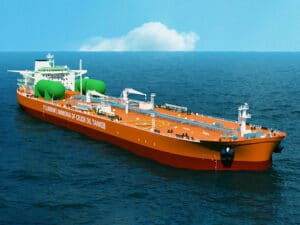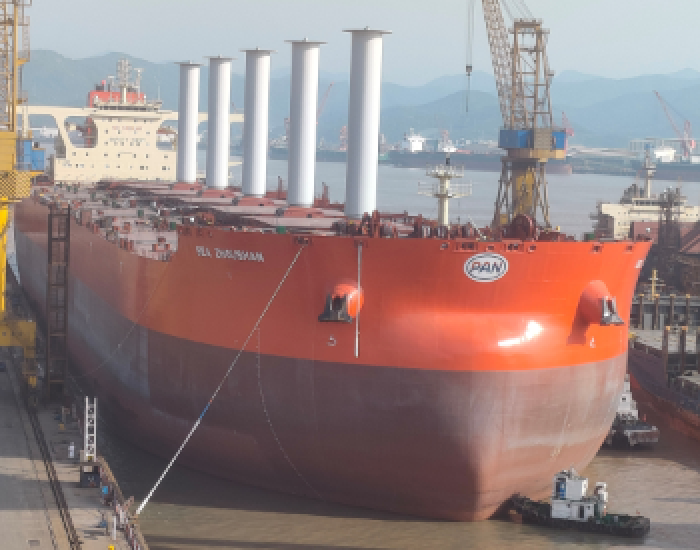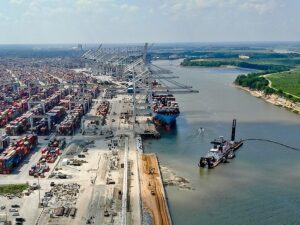
Zero by 2050: Is the technology there yet?
Written by Nick Blenkey
Mining giant Vale says that if the pilot rotor sail project proves effective, some 40% of its fleet could use the technology, which would result in a reduction of almost 1.5% of Vale’s annual iron ore maritime transport emissions. (Credit: Vale)
Propeller Cap Swaps
Recently, underwater repair and maintenance specialist Hydrex installed propeller cone fins on two chemical tankers: one in Antwerp and one in Rotterdam. Both operations were carried out with the company’s dive support workboats. Stationed in these ports, they allow for immediate mobilization.
Propeller caps can recover energy losses in the propeller hub vortex in the propeller’s slipstream. This decreases fuel consumption by from 3% to 5%, according to the manufacturers, and reduces cavitation on rudders and hulls.
Hydrex says it can install propeller cone fins underwater on any size and make of propeller, on both newbuild or in-service vessels.
A direct result of these underwater installations is that an owner can instantly start benefitting from the fuel savings a propeller cone fin brings, without having to wait until the vessel’s next scheduled drydocking for the installation.
Hydrex carries out these operations following the specific procedures required by the propeller cone fin manufacturer, adapted for an underwater installation.
After a preliminary inspection the divers remove the propeller cap and clean the flange where the device is to be installed. They then lower the propeller cone into the water and position it on the propeller. The bolts are put on the correct torque and secured. Hydrex teams can work in shifts around the clock to finish the operation as quickly as possible.
Air Lubricated Hulls
Air lubrication of hulls with air bubbles is another proven fuel saver. Bureau Veritas has just granted an Approval in Principle (AiP) to a hull air lubrication system that requires no energy-consuming compressors to generate the bubbles. It also looks to be an attractive retrofit solution.
Developed by Singapore-based GILLS Pte Ltd., the GILLS (gas injected liquid lubrication systems) technology uses airfoil profiles developed by NASA predecessor NACA in a vortex generator, installed in the bow of the ship, to create self-generating micro-bubbles. This creates a “’turbulent modulation” with a “hull-tightening” effect that reduces hull drag and energy requirements.
The self-generating nature of the micro-bubble clouds with no requirement for air-compression and additional energy requirements is a major feature of the GILLS system.
Peter Kneipp, managing director of GILLS Pte Ltd. said: “The GILLS Air Lubrication System is a nature based innovative technology that not only uses the micro bubbles to reduce the drag, emissions, fuel and biofouling, but it also utilizes the ship speed to generate a negative pressure and minimizes the required external compressor power.
“We are greatly confident that GILLS will be a valuable contributor for practically every ship type to improve the EEDI /EEXI IMO Index. GILLS can also be retrofitted to existing ships as well as new vessels.”
According to David Barrow, SE Asia Zone vice-president for Bureau Veritas, “the GILLS systems has been installed on an existing vessel for a number of years now and the vessel owners are confident that the fuel savings are approximately 10%.”
Hull Coatings
Of course hull “slippiness” begins with having a smooth hull and the right choice of antifoulant. But that’s a topic for a whole feature of its own.




